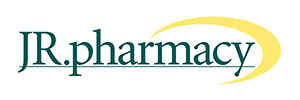There has been much commentary on the impacts of PBS reforms and price disclosure on dispensary sales, gross profit and substitution, yet the flow on effects to Pharmacy valuations are certainly much less discussed if not less understood.
As a Pharmacy owner, do you understand the impact of these reforms on the net profit of the pharmacy and the underlying value of the Pharmacy?
While the long term impacts of price disclosure are yet to fully play out, the Guild’s estimate of loss per Pharmacy of $90,000 in dispensary remuneration in 2014/15 is playing out as we go to press.
The good news is that, at this stage, the demand for Pharmacies in good locations, opportunities for improvement etc appears to be largely unchanged, this translates to little or no movement in the capitalisation rates and multipliers applied to EBITDA in assessing the value of a Pharmacy. That demand remains robust is a positive signal of the long term prospects of the sector, indeed, current demand may well be supported by long term (greater than 5 years) optimists employing a long term view of potential short term issues.
Pharmacy owners should respond promptly to counteract or offset the potential downside. While many options are available, there is not a one size fits all solution and a knee jerk reaction is certainly not recommended – the approach must be systematic and well thought out. Similarly, solely relying on increasing script volumes will not be sufficient to claw back all of the losses. The live client example below shows that to maintain the dispensary gross profit dollars in the 2015 financial year, a total script growth of 13% is required by then given the falling gross profits dollars per script.
| 2013 (Actual) | 2014 (Actual) | 2015 (Estimated) | |
|---|---|---|---|
| Script Numbers | 75,500 | 80,509 | 85,065 |
| GP$/Rx | $13.34 | $12.51 | $11.84 |
| Total GP$ | $1,007,170 | $1,007,170 | $1,007,170 |
The strategy to alleviate these losses should include a multi-pronged approach starting with a focus on managing the average retail sales and average retail items in the bundle purchased by customers. The retail sector offers significant potential upside; however, this may require a culture shift to increase staff engagement with the customers – it must become the entire focus of the whole pharmacy not just tokenism. Staff may need to be trained to be heavily focussed on customer service in order to achieve an improved retail experience which will assist in increasing the product bundle per customer and improving the holistic service level on offer.
To understand where the pharmacy is up to in the cycle, it is important to benchmark and monitor the business performance. It is essential to streamline your bookkeeping processes and reporting using timely data to make strategic business decisions. By employing a balanced and tailored strategy, you will be surprised by the opportunities that are available to not only regain the lost ground, but improve the profitability of your Pharmacy.
Sector reforms can have an immediate and tangible impact on the value of your Pharmacy, now is the time to understand the potential impacts, re-evaluate future goals and implement a strategic plan to overcome the challenges and protect the value of your Pharmacy.
by Felicity Crimston





